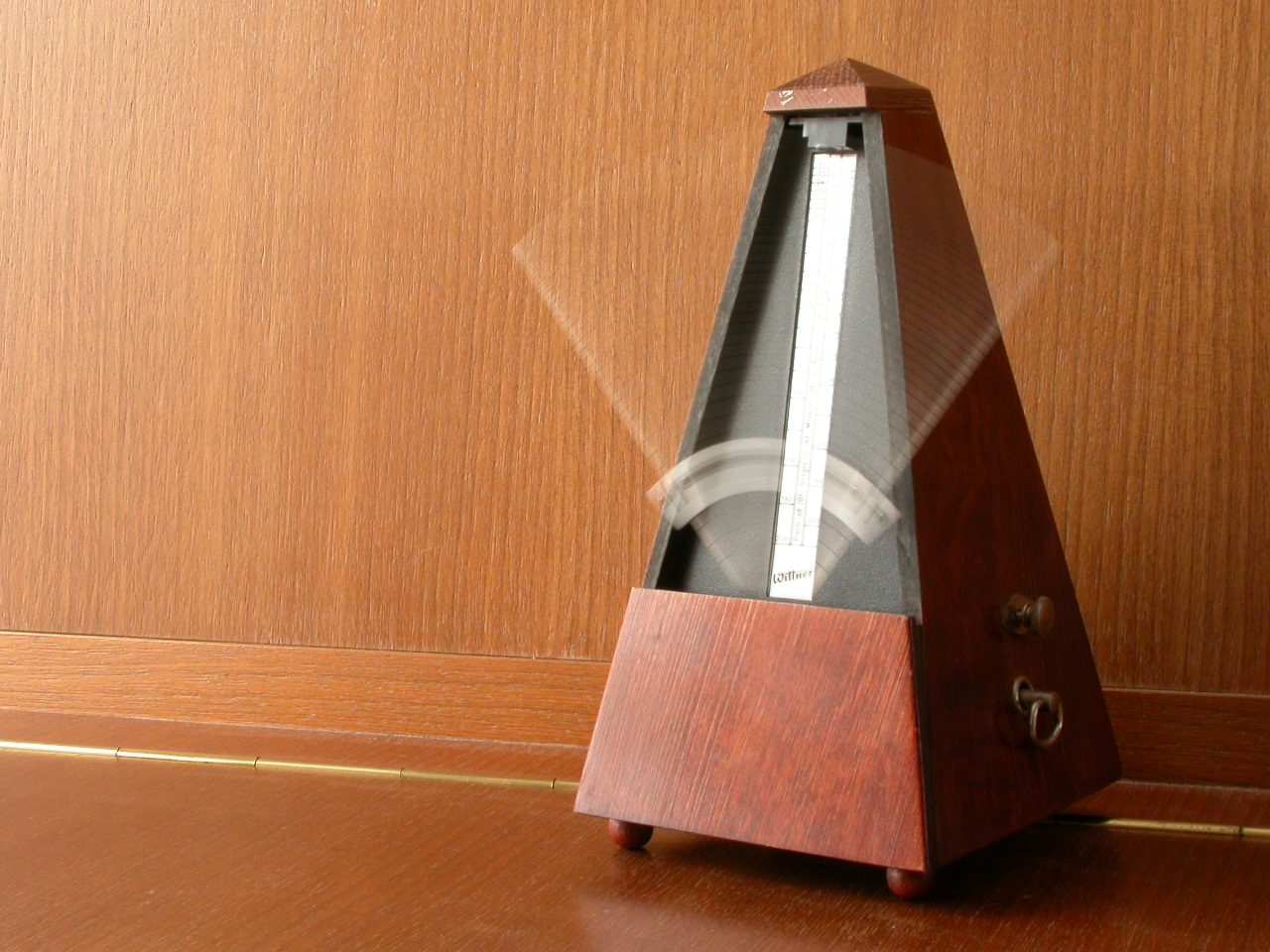Conception, object and performance: Scores and fashion.
21 January 2016 by Marc Taddei
Interpreting a musical work is made more complex when one considers the distinction between the composers’ s original (and ultimately unknowable) conception of the work, its score (which is the object), and finally, its performance (which is the event in which the conception is made manifest to the listener).
Any performance is only an example of a musical work and in general, the most complete guide that interpreters have toward a realisation of this conception is found in the summery of the work, or the score. Scores can be highly informative, but they are limited to the notation of only a few parameters such as pitch, duration and dynamics. These parameters are also quite vague. For instance, how does one notate a certain kind of dynamic, in the absence of exact decibel readings (at a certain distance) or how does one give unambiguous indications of how one is to perform a sforzando or staccato?
Putting these complexities and questions aside, scores are still the best gateway to a composer’s conception that we have for the simple reason that it is easier to study that which is tangible.
As time passes and performance traditions come and go (in much the same manner as fashion), these performances can alter our perceptions of what is “correct” and can suggest to us what the composer’s ultimate conception would have been during our time.
Music performance has now been recorded for over one hundred years and as such, we are able to hear how performances have changed over this period. This insight into interpretive fashion can be strengthened by indications in the musical score.
Tempo is the key interpretive element for any musician to confront – certainly it is for a conductor, as it is the most basic aspect of musical performance that we can show, not being able to be heard! Composers have felt this element keenly. Beethoven’s first question upon learning that one of his works was performed was, “How were the tempi?”.
The introduction of the metronome helped further clarify composer’s thoughts on the matter. While this is all well and good, there are innumerable examples of composers performing their own works and ignoring their own tempo indications – Stravinsky being one of the most prominent examples. Likewise, upon hearing the Juilliard Quartet performing his works, Schoenberg expressed gratitude and surprise at what the group brought to his music. It was not as the composer imagined it, but he was delighted by the new insight the quartet brought to his masterpieces.
There has always been two schools of thought, when it comes to interpretation. In the 19th century, conductors such as Mendelssohn advocated for strict tempi that let the music speak while conductors such as Wagner argued for a continually changing tempi that brought further insight into the phrasing and structure. In the 20th century , this dichotomy was exemplified by Toscanini and Furtwangler.
Fashion in performance practice is inescapable. Over the past half century, classical music has seen a distinct change of accepted norms, thanks to musicological scholorship, specifically the “orginal instrument” movement. Coupled with a history of recorded performance in excess of a century and we can clearly identify trends. Prior to this, we have timings of performances in the 19th century that suggest certain basic tempo possibilities.
In general, during the 20th and 21st centuries, performance of classical repertoire is getting faster, while performance of romantic repertoire is getting slower.
Mahler’s adagietto from the 5th symphony can last as long as 11 – 14 minutes in recorded performance, but the timing taken of his 1904 performance (taken by Bruno Walter!) was 7 and half! Likewise, a performance in St. Petersburg from 1907, also conducted by the composer lasted seven minutes, according to a bass player who notated the timing. Mahler’s piano roll recording of the first movement of his 4th symphony also suggests he imagined faster tempi than we currently hear. Mahler continually complained of conductors exaggerating and distorting his thorough indications.
Another example are the tempo indications of Tchaikovsky in his final two symphonies. Until Mahler, Tchaikovsky was without question the most thorough composer in terms of his instructions to performers. His written tempo indications always match his marked metronome marks. What one is struck with is the fact that Tchaikovsky’s marks are neither too fast or too slow – they do just work. While this is not to say that great works such as these can’t work in different tempi, it does suggest that further experimentation with the composer’s wishes should at least be considered.
In the case of Tchaikovsky’s fifth symphony, the second subject of the first movement poses a particular challenge to today’s interpreter. This section is marked Molto piu tanquillo and is marked at 92 beats to the minute – as compared to the overall tempo of 104 beats to the minute. Now, the overall tempo is certainly faster than what we normally hear, but it is the second subject tempo that will take some listeners aback. It is considerably faster than the moltissimo meno mossi that almost every conductor today adopts. Perhaps the genesis of this performance tradition started with Artur Nikisch. The premiere performance, conducted by the composer was not well receive, but when Nikisch toured the work with the Berlin Philharmonic, critics were quick to proclaim the composer’s interpretation more convincing than that of the composer. It seems clear from reviews that Nikisch certainly performed the second subject far slower and more freely than indicated in the score.
Timings taken from Bayreuth performances also confirm that Wagner operas are taking longer to perform that is the general average for today – although there are interpretations that are both faster and slower that the original performances.
Examples include Hermann Levi’s 1882 Parsifal at 4.04 vs a 4.33 for James Levine in 1990 and a 4.42 for Toscaninni (of all people) in 1931. Likewise, Karl Richer’s performance of Das Rheingold from 1876 lasted 2.31 vs James Levine’s 2.43 from 1990.
In the 19th century, the conductor Sir George Smart took fastidious timings of his performances, mostly at the Philharmonic Society of London, between 1819 and 1843. While these timings suggest that his interpretations of Beethoven are no slower or faster than today, they do not indicate whether or not he took exposition repeats or repeats in the scherzos. It could also be that he was one of the conductors that Beethoven complained about! Certainly the Levi and Richter performances were done under the supervision of the composer, while Mahler’s timings and the metronome marks of Beethoven and Tchaikovsky certainly indicate a specific approach be taken.
Classical performance today appears to favour far more regular tempi than from the turn of the 20th century up till the 1960s. Certainly in terms of fashion today, Mozart, Haydn and Beethoven are speeding up and Tchaikovsky is tending to slow down.
Beethoven was an early adopter of the metronome, stating “I have thought for a long time of giving up these nonsensical terms allegro, andante, adagio, presto, and Maelzel ‘s metronome gives us the best opportunity to do so…”. On another occasion, he wrote “The metronome markings will be sent to you very soon. Do wait for them. In our century, such indications are certainly necessary. Moreover, I have received letters from Berlin informing me the first performance of the symphony was received with enthusiastic applause, which I ascribe largely to the metronome markings. We can scarcely have tempo ordinari [i.e., Andante, Allegro] any longer, since one must fall into line with the ideas of unfettered genius.”.
“In his later works, Tchaikovsky started using metronome markings, and in an evident attempt to prevent incorrect interpretations of his A minor Trio, wrote in his score that “Artists who expose themselves to ‘pain’ in playing this work are requested to follow the composer’s metronomic settings very precisely.”
In terms of modern taste for tempo tolerance, Tchaikovsky and Beethoven’s metronome markings are occasionally too fast for modern tastes, but likewise, they are quite often at speeds that are “standard” and in the case of Tchaikovsky, many are slower than is now the norm. While I have no problem with a musician taking whatever tempo he or she feels appropriate, my view is that one must at least consider these indications. A metronome mark needn’t be sacrosanct, but it is the most unambiguous marking a score can contain! One of the greatest aspects of studying the scores of Beethoven and Tchaikovsky is that their metronome marks are always backed up by the written indications and invariably (when one gets to a point in the score where it may be likely that musicians will rush) we will see the words sempre (always, as in sempre piano) or giusto (with exactness, in strict tempo) as a reminder of what the original conception of a work was (is).
Another aspect of interpretation that should be considered is the overall duration of one section of a work’s structure compared to another. Metronome marks give a clear indication of these relationships and if the relationships remain constant, regardless of tempi adopted, it would suggest that the interpreter is obeying the general structural hierarchy as given by the composer. However, if one tempo indication is obeyed but another is not adopted, the relationship between the two will be altered, as will the basic duration percentage of the larger structure. One sees this clearly in Beethoven’s markings, where a Beethoven tempo mark might be adopted for one section but then a following marking is disregarded.
The role of an interpreter is breath life into the score through performance, but in such a way that the tempo choices made do not distort the composer’s conception. Where these boundaries lay may depend on the fashion of the day. Obviously great works such as these will survive a lot of interpretive excess (which is a subjective comment on my part) but I would counter that a musician worthy of the name, who attempts to follow the composer’s express wishes (as best as one can divine from a score) should be able to make “music” out of the indicated guidelines. As conductors, we expect the musicians with whom we perform to make music within the guidelines that we indicate, so my view is that a Quid pro quo with respect to the score on the part of the conductor should not be seen as limiting. Good musicians can certainly turn a beautiful phrase in any number of ways.
My experience with living composers is that they are very particular about what they have written and are reluctant to change markings, unless they are not working or are impossible to perform.
Speaking personally, paying attention to these marks has broadened my interpretation of them – if not the length – and I hope have given the audience a fresh perspective on these works and a chance to make their own minds up, regarding what a piece might “mean” or how it “should” be done.
